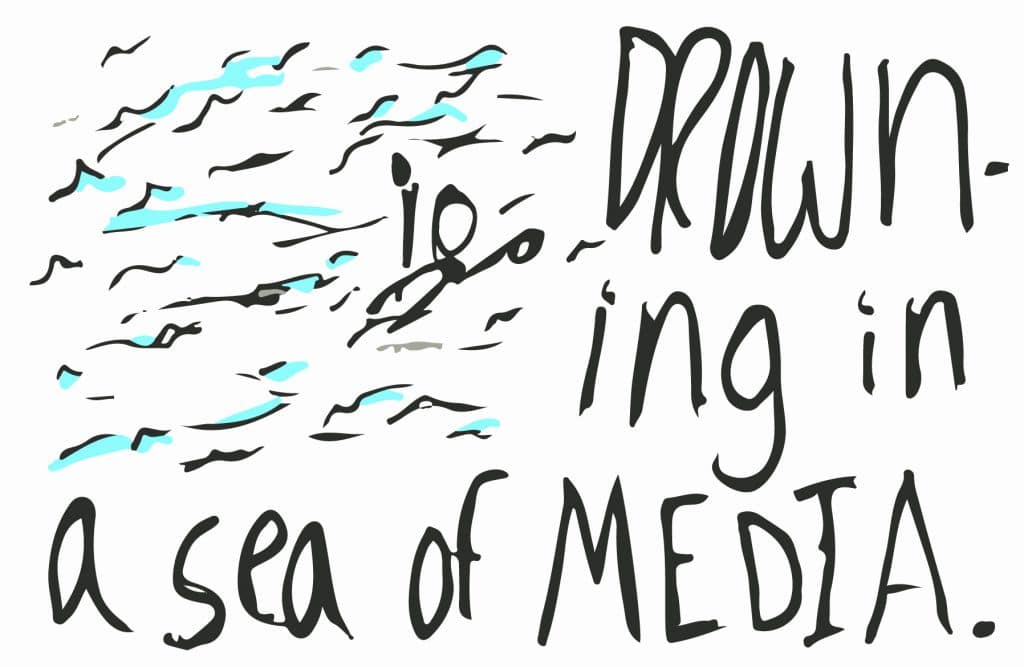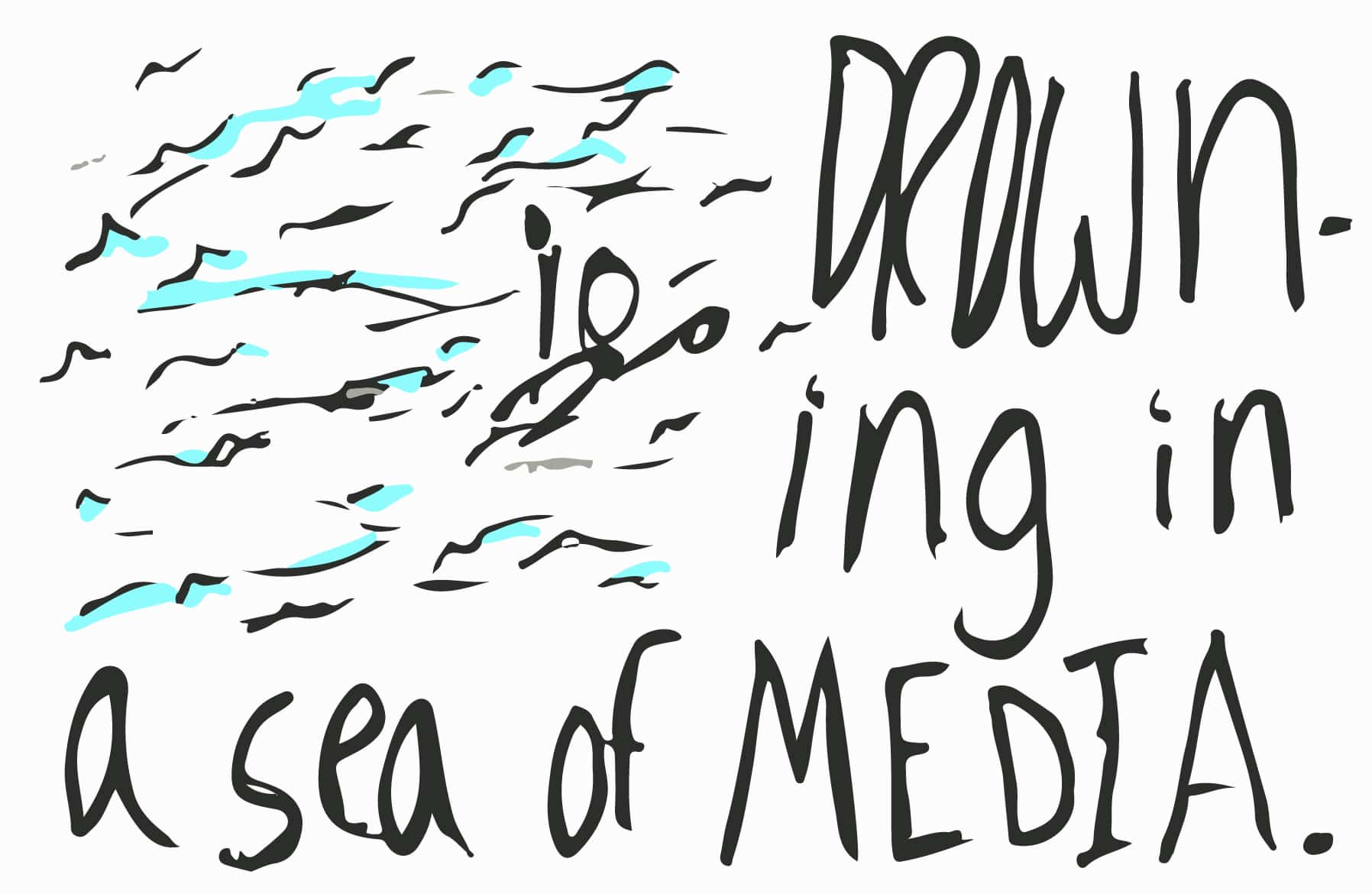
Sketchnoting: Learn how to enjoy note-taking
There’s a way to stop being bored in class, remember more of your professor’s lesson and even make the time pass faster. It’s called sketchnoting.
Sketchnoting, also known as visual note-taking, is the act of capturing an oral presentation by using both textual information and visual content. Often this includes the use of stylized fonts, design elements, colors, doodles and drawings.
Plain text note-taking is beneficial in remembering the content of a speech, so why would someone bother incorporating visuals? The answer is simple: the combination of both text and images causes an increase in how much people remember.
A study published in the Journal of Experimental Psychology has shown that when information is presented both verbally and visually, people will remember about 65 percent of the content, as opposed to only 10 percent when the presentation is only oral in nature.
This study points to a concept called the Dual Coding Theory. Originally proposed in 1971 by a psychology professor at the University of Western Ontario, the Dual Coding Theory suggests that the mind codes memories in two types: verbal and visual.
Nigel Thomas, a philosopher and cognitive scientist, explains, “The chances that a memory will be retained and retrieved are much greater if it is stored in two distinct functional locations rather than in just one.” Sketchnoting fits this theory perfectly, taking verbal information and storing it using text and doodles.
In addition to the initial act of note-taking, sketchnoting also encourages reviewing of the notes later on.
Derek Bruff, a lecturer at Vanderbilt University and sketchnote enthusiast, explains that he has many legal pads full of plain text notes. “I never look at them,” he said. After he began to sketchnote, Bruff found that it provided him with a record of a presentation or speech that he could actually go back to. Because sketchnotes tend to be more aesthetically pleasing than text, people are more opt to find them engaging. To further encourage reviewing, the note taker can go back later and touch up notes, highlight important info, enhance doodles and even add color.
Improvements in memory recall are a primary feature to sketchnoting, but perhaps the greatest benefit to visual note taking is the fact that it can be fun.
How many times do people find themselves doodling during a lecture because they are bored? Sketchnoting takes that natural desire to doodle and uses it in a beneficial way.
In his book The Sketchnote Handbook, designer and author Mike Rohde explains what this new form of note taking did for him.
“As I captured my first sketchnotes, I was able to slow down and listen for big ideas,” he wrote. “I loved the no-turning-back attitude of using a pen. Best of all, I had a great time taking notes again.”
Getting started with sketchnoting is very easy. All you have to do is translate oral concepts into visual doodles. If you hear the speaker say that society is drowning in a sea of media, instead of just writing the quote down, also draw a picture of a person out in open waters struggling for his life.
These visual representations can be as simple as stick figures or complex as a detailed profile. Regardless of the quality of the visual, the verbal concept can still be conveyed. You don’t have to be an artist to sketchnote. All you need are good listening skills, your imagination and a desire to try it.
Other common methods of sketchnoting are to employ a variety of font styles, banners, dividers, arrows and other design elements. Some people even choose to give their notes more life by adding color, during or after the note-taking process.
In his book, Rohde emphasizes the fact that sketchnotes are ideas, not art, and he explains that you don’t have to be good at drawing to do it. Don’t be deterred when you see skilled artists’ and designers’ sketchnotes. Your work may not be as professional looking, but you can still have fun and reap the benefits that visual note taking has to offer.
In addition to this, regular practice will always bring about improvements. “I try to sketchnote at least once a week,” Rohde said. “At times it’s more often if I’m brainstorming or involved in meetings. I feel it’s good to continually keep in practice and even more — explore new ideas.”
Bruff, too, finds time to practice his sketchnoting skills. He runs a website called Doodling in Church (http://derekbruff.org/blogs/sketchnotes/) where he posts images of sketchnotes that he takes during sermons. “It was also kind of a way to practice,” he said. “Every Sunday I knew I could have 30 minutes of practice.”
Still, no matter how long someone has been sketchnoting, his or her notes will never be perfect. Bruff shared that he has moments where he’ll look at his sketchnotes and think, “Well crap, I totally shouldn’t have put that there.”
College students often have to rely on note-taking to capture vital information they will later be tested on. As a lecturer and teacher at a university, Bruff believes that sketchnoting could be valuable to students, removing them from the role of a scribe to being deeply active in what they are hearing.
This being said, Bruff cautions that when you’re sketchnoting, you miss certain details, which could be a problem in some classes. Pointing to this very issue, Rohde offers some valuable insight. “Students should know that notes are on a continuum,” he said, “from plain text-only with maybe icons for embellishment, to very visual imagery that has text annotating the graphics. Finding the right level of visual fidelity is based on the content you need — heavy imagery might get a failing grade on a chemistry test, so there you may need high detail.”
While sketchnoting may not be for those who need to capture every detail from a speaker, for some it can be a great source of pleasure and a way to remember more.
The use of visual cues improves memory recall, and the level of concentration that sketchnoting requires causes the listener to be immersed in the activity. Anyone can do it, and there are numerous methods and techniques to try.
Next time you find yourself sitting in a class lecture or a church sermon, pull out a pen and some paper and try sketchnoting. Later on, ask yourself two questions: “Can I remember more?” and “Did I have fun?”
If you answered “yes” to both questions, welcome to the wonderful world of sketchnoting.

